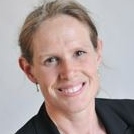Joanna Martin QC, Devon Chambers, Plymouth
 Called to the Bar in 2005, having previously worked as a solicitorsince 1996, Jo Martin QC was one of 32 women appointed silkfollowing the QC selection process in 2017, becoming the first QC tobe appointed from a Chambers in Plymouth.
Called to the Bar in 2005, having previously worked as a solicitorsince 1996, Jo Martin QC was one of 32 women appointed silkfollowing the QC selection process in 2017, becoming the first QC tobe appointed from a Chambers in Plymouth.
Jo took a rather unusual career path to becoming a barrister. Havingdone poorly in her ‘A’ levels, Jo nonetheless secured a place atCambridge College of Art & Technology to study for a degree inEnglish. Whilst at college Jo had had vague ideas of becoming either a teacher or aphysiotherapist but following graduation the idea of becoming a barrister developed. Beingunsure how to set about on her chosen career path, Jo secured a clerical post in the CrownProsecution Service (CPS), and was posted to Bow Street and Marlborough StreetMagistrates Courts. Subsequently, on promotion to Executive Officer, Jo became a lawclerk at the Old Bailey. She described it as “an amazing place to work”, getting to seebarristers like Nigel Sweeney (now Sweeney J), Bill Boyce QC, John Bevan (HHJ Bevan)and David Calvert-Smith (now Calvert-Smith J) on their feet.
After a couple of years, the CPS sponsored Jo to do a three year law degree course atevening classes. Following graduation she was unsuccessful in her application to Barschool so instead took the Diploma in Legal Practice whilst continuing to work for the CPS,before qualifying as a solicitor. Having been with the CPS in London from 1996 to 2003, Jotransferred to the Serious Fraud Office (SFO) for two years as an investigative lawyer.Whilst Jo described that experience as important in her career development, she missedcourtroom advocacy and so she re-joined the CPS in Devon, having moved to the area forpersonal reasons. On gaining her qualification as a Higher Courts Advocate, Jo acceptedan offer from Devon Chambers to join the set and transferred to the Bar – enjoying thebelated joy of ‘eating dinners’.
Jo said she’d had no long term plan to becoming a silk. It was not lack of ambition but morethat she had never had any real long-term career plan beyond becoming an advocate. Thefirst step was probably when some of the judges on the Circuit who knew Jo’s work well,suggested that she should apply for a post as a Recorder, which she successfully did at hersecond attempt. This experience boosted her confidence in her own abilities, so that, laterwhen the Circuit judges suggested that she should start thinking about applying for silk, shecarefully considered this a credible possibility.
Jo, however, was aware that, like many women criminal advocates, she had to some degreebeen pigeon-holed into dealing with rape cases and those dealing with children, while hermale colleagues by and large got more of the (better paid) drug conspiracies, and seriousfraud cases. This made it harder for a woman in criminal work to put together a credibleapplication for silk. However, her Head of Chambers and colleagues were extremelyencouraging and helped her overcome her doubts as to whether she had the necessarycases of substance. Besides some very serious rape and historic child sex cases, Jo hadalso worked on complex and weighty fraud and confiscation cases, including one that hadgone all the way to the Supreme Court. She said that the personal belief in her abilities ofher Head of Chambers, colleagues and judges was crucial in her final decision to apply.Also instrumental in her decision was being inspired and supported by the two Bristol-basedwomen QC’s Kate Brunner QC and Anna Vigars QC and the desire to inspire others,particularly young women, as part of the Western Circuit Women’s Forum.
In preparing her application, Jo said that she benefitted from colleagues who had beensuccessful in previous silk competitions who gave her copies of their application forms. Josaid the application form was formidable, and the only way she managed to tackle it was bygetting up an hour earlier each day and devoting that time to the task before heading off tocourt to continue her practice. She did consider getting help from consultancy firms (“allbased a long way from Plymouth and hideously expensive”) but decided against doing soafter being told by one company that they could not fit her in, and by another that they couldonly offer a Skype session at what Jo described as a “crazy price” for a barrister earningmoney at legal aid rates.
As demanding as the form was to complete, the hardest part of the application process washaving to ask her peers and the judges if they would be willing to be named as potentialassessors, although to her great relief “each and every one of them” replied with anenthusiastic ‘yes’.
Jo said that she had always been better at interviews than filling in forms and she was alsoinfluenced by the Selection Panel’s preference for applicants not to be coached. In theevent, she said the interview was fine. She had enjoyed it (“what’s not to like, talking aboutyourself!”). She said that Dame Janet Smith (“a hugely inspirational woman for people likeme”) was “absolutely lovely”. The first female silk had only been appointed in 1949 andDame Janet had been number twenty-seven. It had taken fifty years to get to one hundredfemale silks. It was therefore a matter of pride to Jo that she was number 429 of womenappointed QC to date. She owed these women a huge debt of gratitude. However, therewas still a very long way to go.
In the build up to the interview, Jo had re-read her application form and the competenciesframework, and marshalled the information on what she had done since submitting her form.Diversity had been the hardest of the competencies to talk about. Jo said she could seewhy people got coached on the subject. She had felt that one of the answers she gave ondiversity had been “rather rubbish” and she had not known whether she had succeeded onthat competency.
Jo said that she did not know how things would pan out as a new QC – it was far too soon tosay. On the one hand she might cut out a successful geographical niche as a criminal silk inthe West Country, but on the other if she didn’t “cut the mustard” it could prove to have beena rather costly step. She had no idea, either, whether her work/life balance would improve,although she seemed to be rather hopeful on that score. In the spring of 2018, Jo hadreceived her first QC murder brief, which she described as “incredibly exciting”. And, for themoment, she was as busy as ever because she still had cases she had been doing as asenior-junior.
To young people from whatever background who aspired to a career in advocacy, Jo wouldsay “never give up”. People developed at different rates and some, as she had, “bloomed”later in life. Some people only discovered their true vocation later in life – for example, oneof her colleagues in Devon Chambers had become a barrister at the age of 44. Herexperience demonstrated that it was not necessary to follow the conventional path ofuniversity, Bar school, pupillage and tenancy. Moreover, there were huge benefits in termsof work and life experiences which could be brought to the work from a less conventionalpath. Working as a junior civil servant had provided her with some real insight into thepeople who were now her clients, and some empathy with the lives which they lived.Jo said that she did not think that being a gay woman had impacted at all on herprofessional life. She highlighted in particular the CPS as having been an incrediblyinclusive employer that “allowed you to thrive” irrespective of sexuality. Similarly she hadnever felt any prejudice from the Bar or judiciary in the West Country. She was at pains tostress that she appreciated that in making the decision not to have children, she had beenable to concentrate on work in a way many women barristers struggled to do. If she ‘stoodout’ in any way, it was currently as the only female criminal silk west of Bristol.
- Date: March 19, 2019
- Category: QCA Profiles 2018


